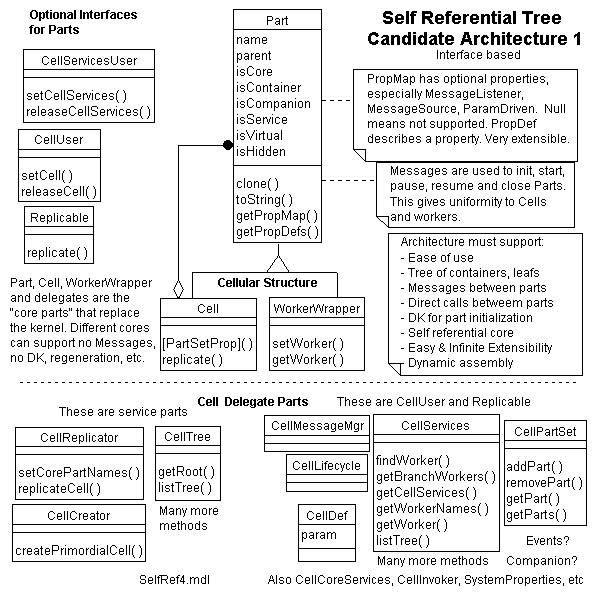
9/12/99 - Jack Harich - Go Back
Overview
This architecture is based on a Self Referential Tree. This concept was proved very feasible in Prototype 1. Unlike the prototype, this architecture fully expresses the UHR Technology Grid. The basic concepts are the Cellular Structure, Cell Delegate Parts and Optional Interfaces. All these put together are the "core" parts that provide the infrastructure "domain" parts need.
The Cellular Structure is defined by Part, Cell and WorkerWrapper. These form the basic living structure of all systems, a System Tree of containers and leafs. The tried and true Composite Pattern is used. The worker in WorkerWrapper is a leaf part that does most of the work in systems. It's all really a tree of Cells and workers, our two part types. This structure has to be right, because everything else build upon it.
The Cell Delegate Parts do vast amounts of work for the Cell. Byvarying them we can offer different types of cores, such as a very basic one with no DK or Messsages, one with DK, and one with DK and Messages. The last is the full blown UHR Technology Grid vision.
The Optional Interfaces let Cells or workers offer hooks for various behaviors in interacting with the core. This approach avoids the "one big fixed interface" for reusables, which always runs out of steam as the framework ages, and makes using it a heavyweight, inflexible, unjoyful experience. Instead we offer many optional intefaces, such as the ones shown or implied. For example workers can optionally be a CellServicesUser, CellUser, Replicable, MessageListener, MessageSource and ParamDriven, with more sure to follow as the architecture ages.
Evaluation
(do using Key Use Cases)